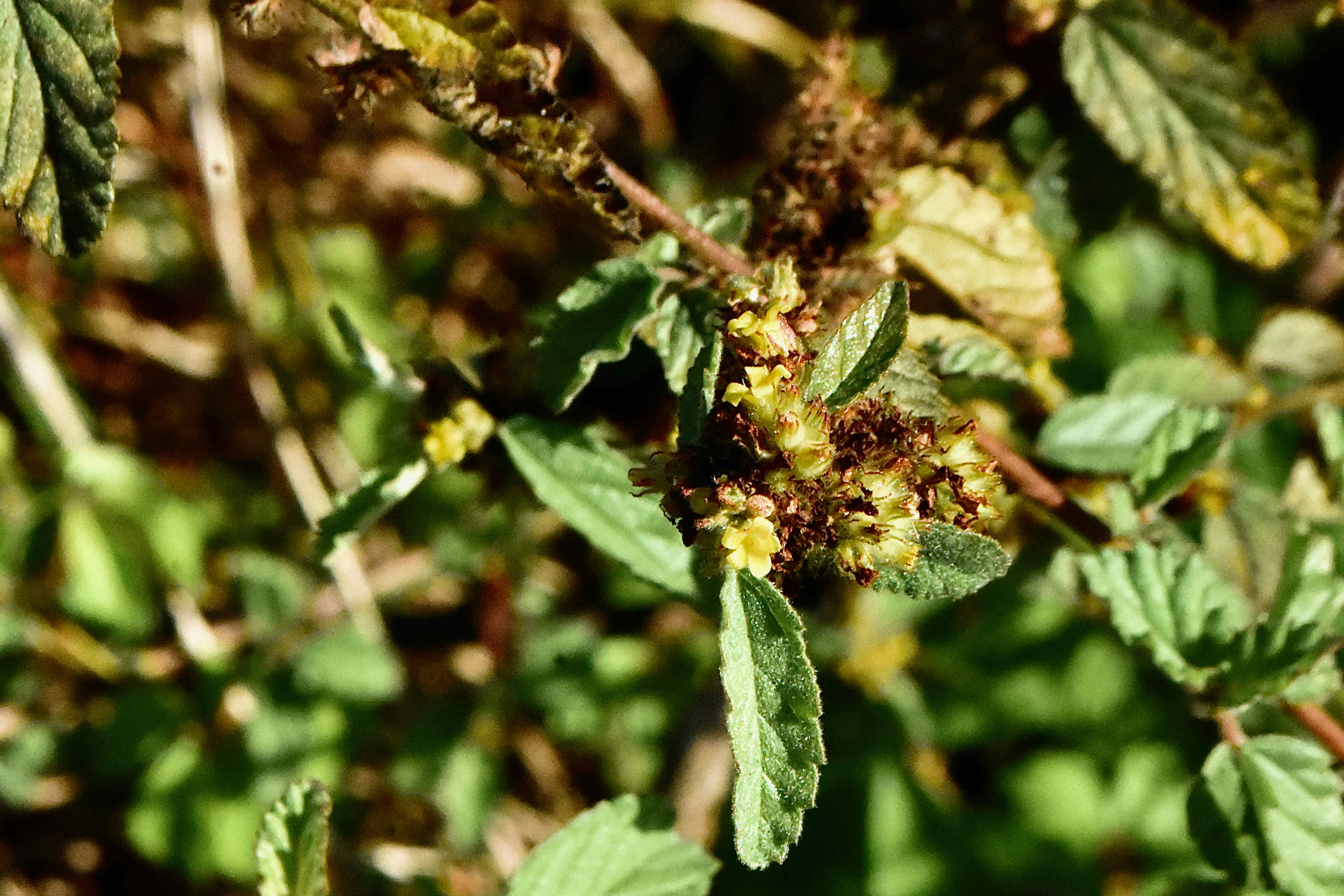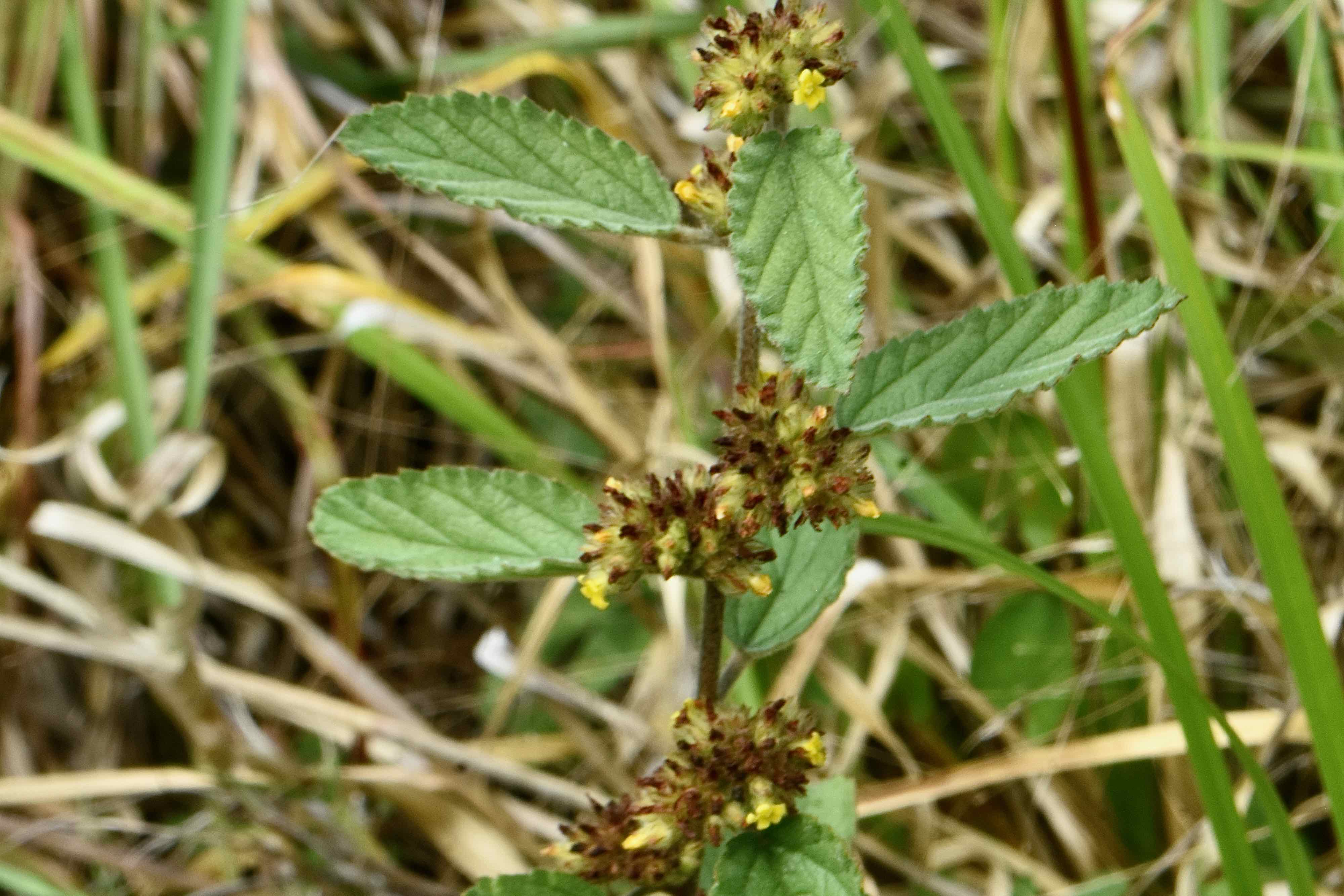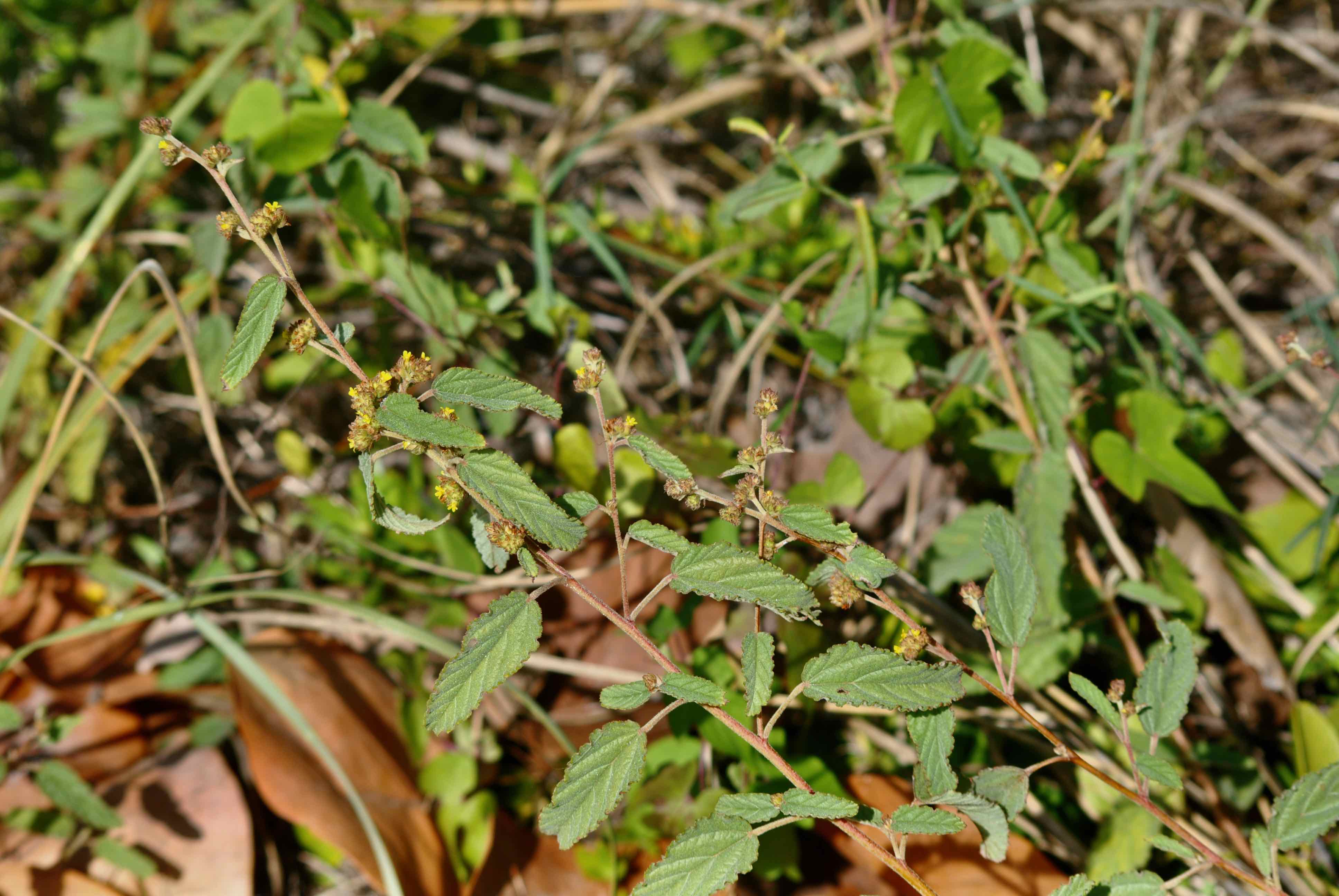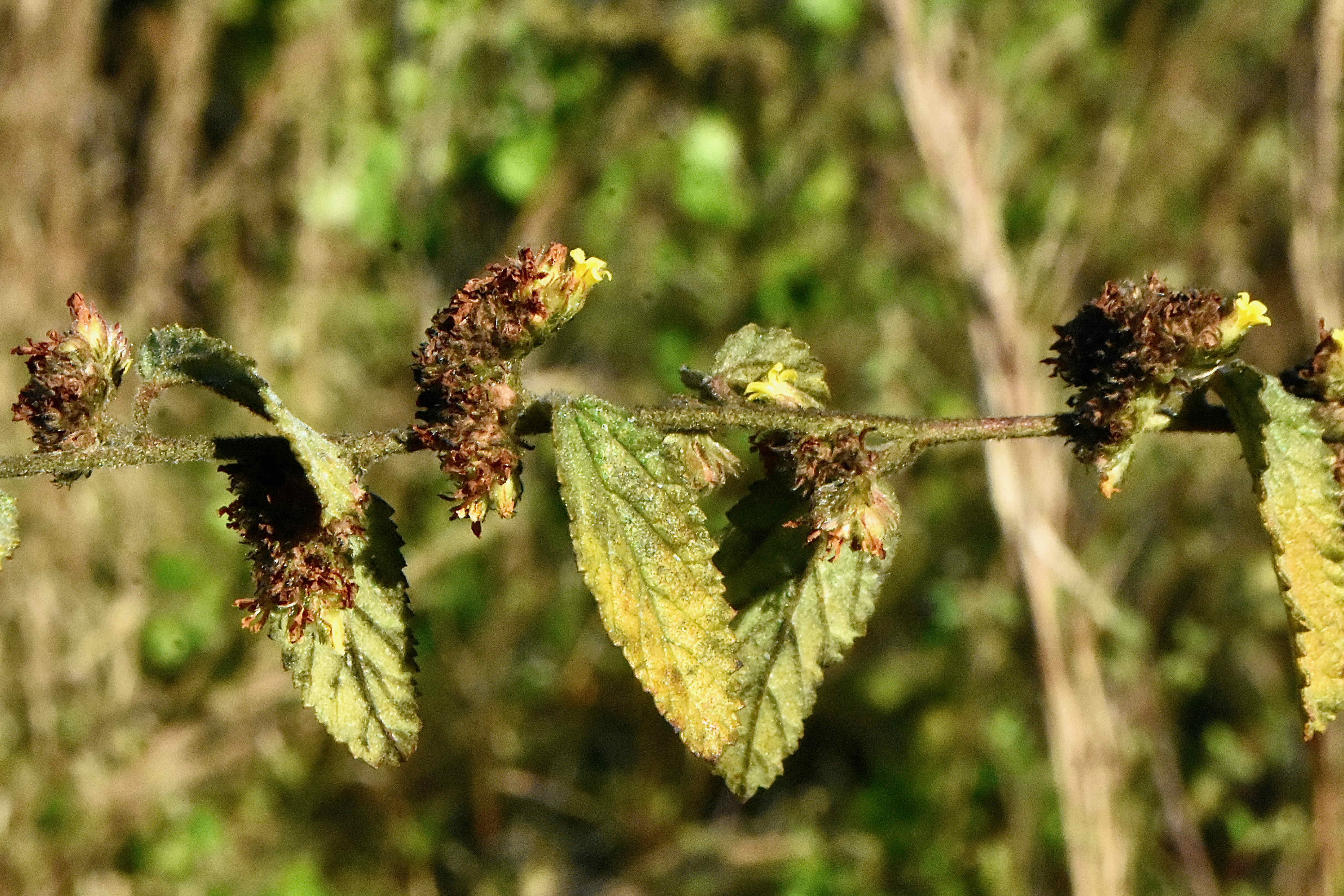
Sleepy morning, photographed at Saw Palmetto Natural Area, Coconut Creek, Broward County, in March 2022.
There’s nothing particularly striking about the looks sleepy morning, Waltheria indica. It’s not an ugly plant by any means; ordinary would be a better descriptive. Its flowers are bright yellow but tiny, the foliage doesn’t really attract the eye.
But in parts of the world — sleepy morning is found on five continents — it is an extremely important plant, a kind of medicinal Swiss Army Knife, used to treat a spectrum of conditions ranging from fever to asthma to cancers to diabetes and leprosy. It’s even used cosmetically to lighten skin tones.
Sleepy morning is a Florida native found in most of the Peninsula roughly from Lake County south, plus the Keys. It’s also found in Alabama, Texas and Arizona.
Beyond our shores, it’s found in the New World as far south as Brazil, plus warmer parts of Africa, Asia — indica means “of India” — and Australia. It’s found in parts of the Pacific, including Hawaii, where it’s an introduced plant. Waltheria honors Augustin Friedrich Walther, an 18th century German physician and botanist.
It’s found in open pine flatwoods, the edges of hammocks and ruderal, or disturbed, areas like roadsides. It requires full sun, doesn’t tolerate shade but is fairly tolerant of salt spray and salt water. It doesn’t compete well in dense grasslands.
Sleepy morning is a subshrub to shrub in size, going between 18 inches to about six feet in height. It can also be prostrate, lying along the ground. It usually has a single woody stem emerging from the ground but quickly splitting near the base into multiple thin branches.
Leaves are basically oval in shape; the apex, or tip, can be rounded or a sharp point, the base rounded or heart-shaped. They are serrated along the edges, with prominent veining and can be slightly cupped. Both the leaves and stems are covered in fine, gray hairs, as reflected in some of sleepy morning’s many other names. Some divide sleepy morning into two species, others into two subspecies, apparently based on how dense those hairs might be, but at the moment, taxonomists don’t recognize the divisions.
Which brings us to the flowers of sleepy morning. They emerge in dense clusters called glomeruli at the leaf axils, the point where leaves meet the stem. They are bright yellow, with five petals each but quite small. They open up early in the a.m. and close in late afternoon, which is the inspiration for the common name. Sleepy morning flowers and fruits year-round.
It has a relatively short lifespan, between one and three years. Although drought tolerant, it tends to live longer in places with moist soil.
Sleepy morning provides both food and shelter for wildlife. Small bees pollinate it. In some places around the globe, it’s considered a weed, but it seldom becomes an agricultural or environmental problem.
In some parts of its range, fiber from the bark of sleepy morning is used to make cords, sandals and packing material, but is not considered a commercially viable use. Medicinally, it’s a different story. Its uses are many and varied.
Parts of the plant are used to make medicines to break fevers, to relieve pain, to induce vomiting and stop bleeding. It’s been used to treat dysentery, diarrhea, bladder disorders, inflammation, ulcers and wounds, stimulate fertility in infertile women, as a sedative, to cure cataracts and many, many more conditions.
In Hawaii, it’s been used in traditional medicine to treat various pulmonary problems, including asthma, as a general tonic, to treat sore throats, induce weight loss and as a laxative.
And there have been scientific studies that show that sleepy morning does in fact produce compounds that have anti-inflammatory, anti-oxidant anti-bacterial, anti-fungal, and anti-parasitic properties. And it’s still being studied for its effectiveness in treating other conditions, including cancers, diabetes.
But it’s most unusual use is cosmetic. Sleepy morning has steroid derivatives and alkaloids that inhibit the production of melanin, the brown pigment in human skin. Extracts are used commerically in products that are intended to lighten skin tones.
Other common names include velvet leaf, buff coat, leather coat, monkey bush, marsh-mallow, boater bush and many more in a multitude of languages. You will see references that classify it as a member of Sterculiaceae, the cacao family, but the accepted classification is as a member of Malvaceae, the mallow family. Marsh-mallow, get it! Seriously, we did not make that up.



